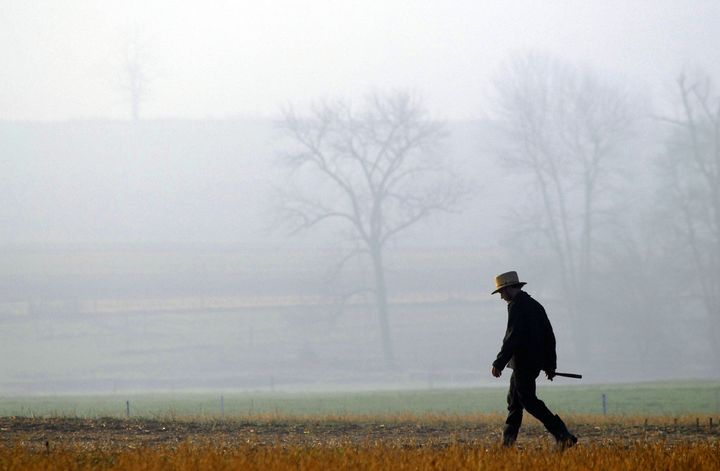
Charles Carl Roberts IV shot 10 young girls execution-style and then killed himself in the one-room Nickel Mines Amish School on Oct. 2, 2006. His rage left five of the girls dead and the others fighting for their lives in regional trauma centers.
Swift expressions of grace from the Amish community transformed this horror into a compelling story of forgiveness that made headlines in some 2,400 media outlets in the following days.
Now horses graze in the pasture covering the former schoolyard and outsiders traveling on nearby White Oak Road are oblivious to the five-year-old scene of slaughter. No monument stands there. No names. No dates. No tributes. And it's not a matter of time. The Amish are not conducting a competition for memorial designs and ideas. They are not planning to construct anything. Their "memorial" is finished.
Memorials reveal the deep values of the people that create them. The sterling National September 11 Memorial & Museum at the World Trade Center site describes the attacks, and the nearly 3,000 victims are honored with their names inscribed on bronze panels. An illuminated wall of their faces will appear inside the museum.
While the September 11 Memorial honors and names the victims of that attack, the five slain Amish girls receive a quiet, plain pasture as their memorial. The Amish are not a callous and thoughtless people. How they have honored the victims of the schoolhouse massacre reveals their spiritual sentiments and religious values.
Exactly 10 days after the tragedy, the Amish community razed the school building. To bring the surviving girls and boys back into a classroom whose walls were peppered with bullet holes and floor boards etched with blood stains would have surely stirred haunting memories and provoked frightening nightmares. Remodeling the schoolhouse into a memorial or museum to recall the tragedy would have drawn thousands of tourists to the Nickel Mines crossroads, clogging the back country roads and cluttering the lives of Amish people in this quiet area.
Beyond the practical reasons, however, were deep religious beliefs that guided the decision not to construct a memorial. The Amish eschew set-apart sacred places and buildings -- even churches. They hold worship services in their homes as a testament to their convictions that daily life should blend with religious experience. Religious shrines, they fear, will divert their spiritual affections away from God and toward the humanly constructed artifacts. Constructed monuments, in their view, accentuate the artistic skill of the designers and architects, rather than the deeper meaning of the historical events.
Moreover, as a forgiving people, they desired not to create objects or monuments that recall the violence of that day or the acts of the perpetrator. Nor did they want to be viewed as victims. In fact, numerous Amish people told me that "the Robert's family carries a much heavier burden than we do." In these profound words of empathy, they were acknowledging that members of the perpetrator's family were victimized as much if not more than their own people.
It is not a matter of forgetting. Amish people have been very clear that this story will be embedded for generations in the larger history of the Amish in America. It is, rather, a matter of remembering graciously and quietly in their hearts.
The empty pasture gives silent witness to those within the community who know the site and the story and who will repeat it over the generations. In that way the story will remain alive in the hearts of community members and their descendants without any public memorial. Amish theology is rooted in a deep sense of humility. The pasture reflects that humility and is the best way to memorialize not the story of terror, victims and violence, but the story of a people who accept the tragedies that come as part of divine providence and absorb the pain without passing it on, without striking back even in how they memorialize acts of violence thrust upon them.
A few old trees remain standing in the pasture that had been the schoolyard. In addition, five young evergreens now grow along a nearby fence row. They stand unnoticed to visitors driving along White Oak Road. They rise heavenward, quietly pointing to the Divine Grace that somehow enabled the community to forgive within hours of the violence. They remain green even in winter -- fitting memorials that recall not the violence but the grace of that awful day. And the neighbors who travel White Oak Road, Amish and non-Amish alike, see them and remember.
Donald B. Kraybill is co-author of "The Amish Way: Patient Faith in a Perilous World" (Jossey-Bass, 2010).